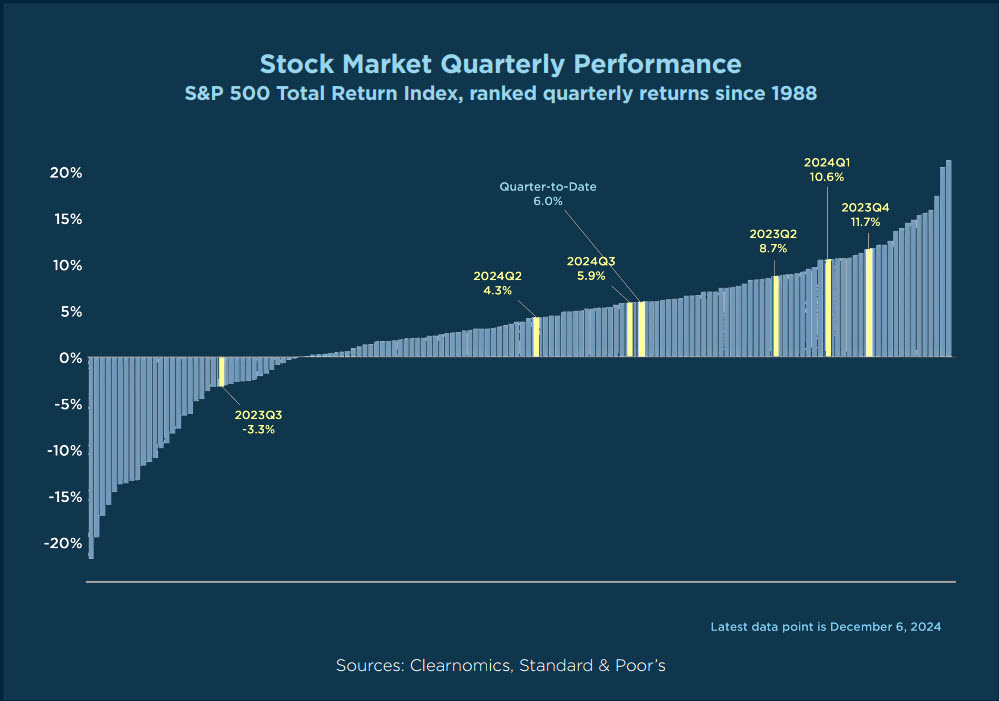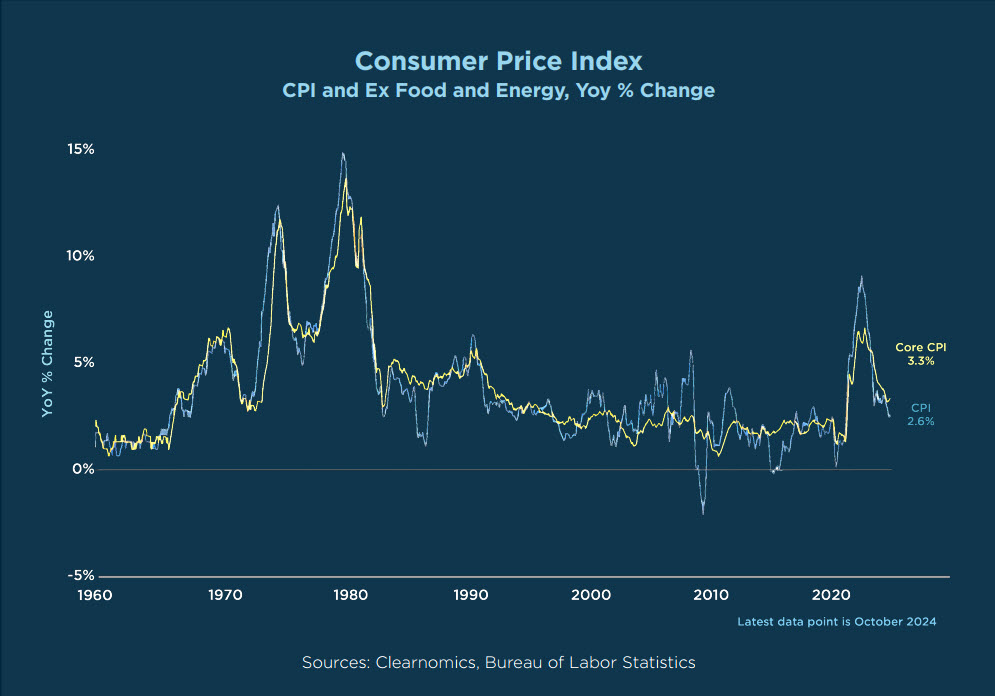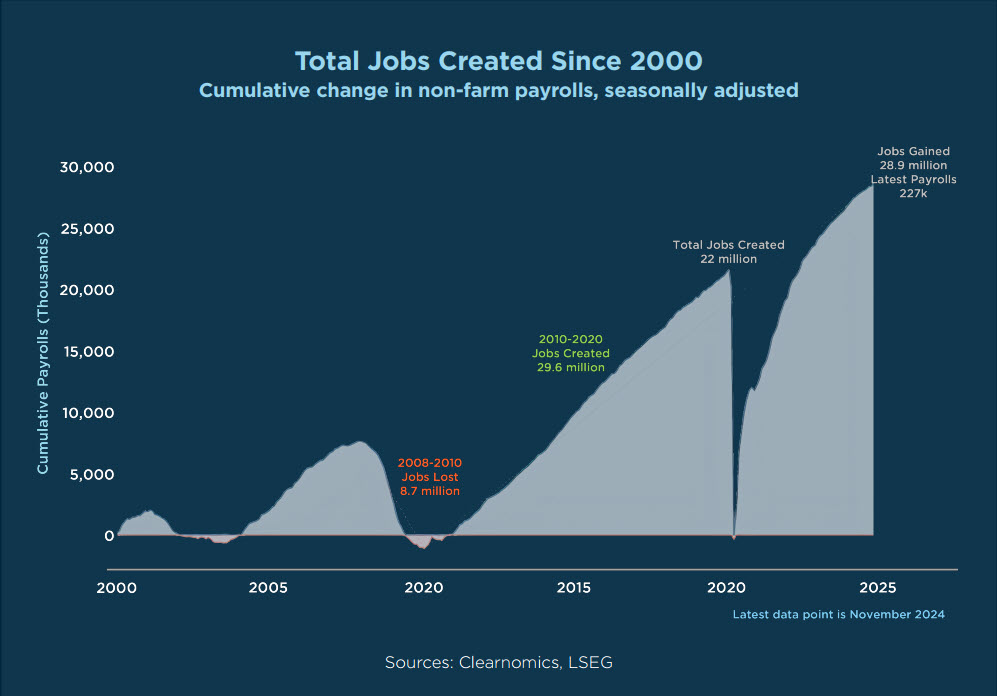3 Reasons Investors Can Be Thankful This Holiday Season
After a remarkable year, investors have much to celebrate this holiday season. Despite persistent uncertainties surrounding Federal Reserve policy, the presidential election, and ongoing geopolitical tensions, equity markets have delivered stellar performance. The S&P 500 and Nasdaq are up approximately 28% and 32% year-to-date, respectively, putting them on track for one of the strongest calendar-year returns in the past 25 years. International equities have also shown solid results, with emerging markets advancing 8.0% and developed markets rising 5.3%.
Meanwhile, the U.S. economy has demonstrated greater resilience than initially expected, with real GDP growth holding steady around 3%, unemployment remaining low at 4.2%, and real personal income growth turning positive. These robust economic outcomes are particularly noteworthy given the headwinds of sluggish manufacturing and a soft housing market.
Financial markets have performed well this year
First, the U.S. stock market has showcased impressive resilience and strength in 2024, driven by robust corporate earnings, stronger-than-expected economic conditions, and growing investor confidence. The accompanying chart highlights that market returns have remained steady over the past two years, with only one quarter experiencing a decline. While technology and AI stocks have been key drivers, performance has been broad-based, with most market segments delivering gains year-to-date. Notably, eight of the eleven S&P 500 sectors have achieved double-digit returns, underscoring the market’s widespread strength.
However, the significant rally since late 2022 has pushed valuations higher. The price-to-earnings ratio for the S&P 500 now stands at 22.3, approaching both recent peaks and the dot-com bubble high of 24.5. This multiple expansion comes despite a notable shift in expectations for Fed policy neutral rate with futures markets now anticipating three to four fewer rate cuts in the coming year and the 10-year Treasury yield of around 3.5% to 3.6%.
While elevated valuations may raise concerns, they are not a signal to avoid the stock market. Instead, they serve as a timely reminder to maintain a well-diversified portfolio. Holding equities or other risk assets should be balanced with allocations to bonds and other asset classes to meet long-term financial goals. As the year draws to a close, it’s an opportune time to review your asset allocation, particularly in light of this year’s substantial market movements.
Inflation is returning to normal levels
Second, investors can be thankful that inflation rates have slowed to pre-pandemic levels. While this does not mean that prices will fall for most everyday necessities, including food and rent, it is a positive sign, nonetheless. This is especially true for investment portfolios since they are sensitive to interest rates, which are directly affected by inflation.
Normalizing inflation has allowed the Federal Reserve to begin cutting policy rates for the first time since early 2022. Much of this year’s stock market volatility was the result of investors guessing when and by how much the Fed would do so.
The economy and job market remain strong
Finally, for everyday individuals, there is perhaps nothing more important from an economic standpoint than the strength of the job market. The fear as the Fed raised rates was that the economy would face a “hard landing”—i.e., bringing inflation down would cause a collapse in hiring.
Fortunately, this did not occur. Unemployment is still near historically low levels and job gains have been steady. Wages have also risen, although not as fast as overall inflation. The accompanying chart shows that the economy has created 28.6 million new jobs since the pandemic, far eclipsing the previous level. While job gains differ from sector to sector, this means that many consumers are in a healthy financial position.
Despite expanding valuations and the futures market pricing in fewer rate cuts, equity market sentiment for 2025 remains broadly optimistic. Key drivers such as liquidity, positive momentum, investor sentiment, and capital flows suggest that equity markets could see additional gains of 5% to 10% next year. However, it’s important to recognize that technical factors, while effective for trend-following, have limitations—fundamentals and valuations will inevitably reassert themselves over time.
Encouragingly, there has been a notable rotation away from large-cap stocks, particularly the “Magnificent 7,” toward small caps and cyclicals, which has helped ease concentration risk within the market. Moving into 2025, we favor sectors such as Utilities, Real Estate, and Industrials as potential areas of strength. Given the evolving market environment, stock selection will be critical, as we anticipate new market leaders emerging in the coming year.
The bottom line? Markets never move up in a straight line, and this year was no exception. Still, returns have been historically strong despite periods of volatility. This holiday season, investors should focus on the positives and ensure that their portfolios are aligned with their long-term financial goals.
Continue to watch our updates for more investment and financial strategy advice. If you have further questions, email us at PrivateWealth@clarienbank.com.




